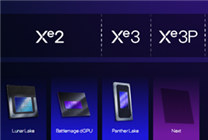A Critical Review of the NVIDIA GeForce RTX 5090: Design Flaws and Repair Challenges
Summary:
- Experts describe the NVIDIA GeForce RTX 5090 Founders Edition as one of the worst-designed graphics cards in history.
- The card’s unique internal layout and fragile components make repairs nearly impossible.
- Users are strongly advised against modifications due to the high risk of rendering the card unusable.
Introduction
The NVIDIA GeForce RTX 5090 Founders Edition has generated buzz not just for its performance but also for its controversial design. Recent evaluations from experts have painted a grim picture of its repairability, raising concerns among potential buyers about the card’s longevity and functionality.
An In-Depth Look at Its Design
Northridge Fix, a leading graphics card repair organization, undertook the task of diagnosing a user-submitted RTX 5090 that had been rendered non-functional after an attempted modification. This instance highlights critical issues in the card’s design that may have far-reaching implications for consumers.
Fragile Internal Structure
The internal makeup of the RTX 5090 is described as overly complex. The main PCB is centrally located within the radiator, and the PCIe interface and output ports extend through a specialized configuration. While this compact design may seem innovative, experts have warned that it significantly hinders maintenance and repair efforts. During disassembly, parts can be easily damaged, particularly small connectors that are vital to the card’s operation.
Misleading Modification Potential
A user attempting to install a water cooling system discovered the limitations of the card’s design the hard way. After modifying the card, it became “bricked,” leading the user to seek professional repair. The deterioration was primarily attributed to a micro PCIe connector, located at the back of the card. Soulless micro pins—too small for the naked eye—are especially vulnerable during any handling.
Catastrophic Connector Failure
The situation escalated when the user, while attempting to reinsert the card, bent one of the micro PCIe pins, effectively rendering the entire graphics card useless. Notably, there are no commercially available replacement components for this essential connector. This lack of availability not only means that repairs are next to impossible but may also result in the entire card being scrapped due to a single point of failure.
Expert Opinions on the Design
Northridge Fix has not held back in its assessment, labeling the RTX 5090’s internal architecture as a design failure. The complexity and density of parts not only make repairs challenging but also increase the likelihood of permanent damage during disassembly. These insights underscore the importance of considering build quality and serviceability when investing in high-end hardware.
Recommendations for Consumers
Given the findings, potential buyers should exercise caution. The risks associated with modifying the RTX 5090—and the catastrophic consequences of damage—are significant. Experts recommend avoiding this model, particularly for those who might be tempted to customize it for enhanced cooling or performance.
Conclusion
The NVIDIA GeForce RTX 5090 Founders Edition presents a stringent warning to consumers about the potential pitfalls of high-performance graphics hardware. With design flaws that complicate repairs and threaten the lifespan of the card, the RTX 5090 stands as a cautionary tale. For those seeking longevity and reliability in their graphics cards, it may be wise to explore alternatives that prioritize both performance and serviceability.








